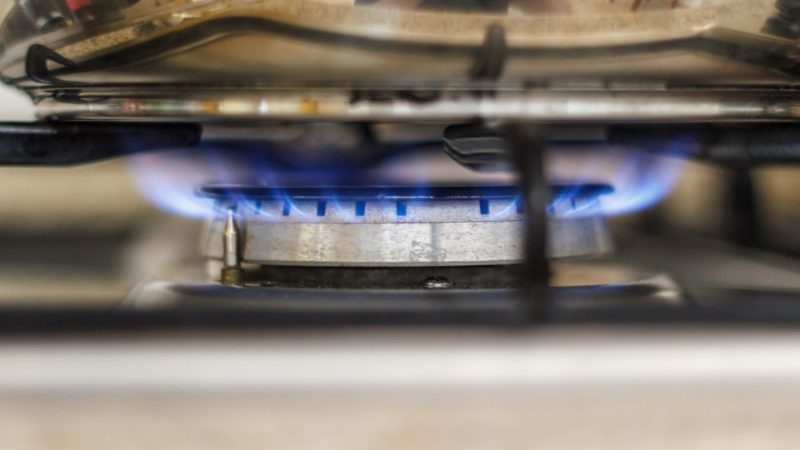Are you wondering how to adjust pilot light on gas stove? There are a few easy ways, and these ways depend upon different situations; all of these we will learn as you delve into this article.
Despite the widespread use of electronic spark igniters, many older gas stoves and ovens use classic standing flame pilots to light the flame and ignite the gas
The pilot flame on an antique stove may need to be adjusted from time to time to ensure optimal operation. Gas is wasted when the pilot light on a gas stove is set too high. If it’s too cold outside, the burners won’t light, or if they do, the pilot light will go out as a result. My friends, there are many more things that you should know about this topic. It would be best if you learned how to light and set up a pilot light. Just read further!
Ways To Adjust Pilot Light On Gas Stove
For example, the gas range powers both the stove and oven burners with a single pilot positioned in the oven. The metal prong that resembles a sprinkler head is where you’ll find the pilot light if you want to use it. Have a helper hold the oven control rod while you use a lighter to remove the knob.
You must warm up the thermocouple, and the pilot lit by pressing the rod down for about 20 seconds at a time. The process for lighting pilots on other stove models is the same. You can change the gas stove pilot temperature by turning a screw near the handle if it’s too hot or cold.
A screw is generally accessible only after the burners and stove have been removed. To locate the screw, follow the pilot tube to the control handle and look for an air chamber. Next, rotate the screw counterclockwise in small clockwise revolutions to dim the pilot flame. As the wick is turned counterclockwise, the flame gets bigger and bigger. Blue flames are possible if the system is running correctly and responding appropriately to changes in conditions.
Some stoves require you to manually modify the air intake to regulate the air/gas combination to tailor the pilot light. A cylinder plate with an aperture around the air chamber and a control knob controls the amount of air that comes in. Modifying the air intake is as simple as shifting the intake plate after loosening the plate’s locking nut. Reduce the size of the flame by gradually closing the aperture using a spinner in the desired direction. If you turn it over, the flame will be more prominent, and the opening will be more comprehensive.
Now, how to adjust pilot light on gas stove in different situations?
#1. Thermocouple failure
The thermocouple may fail to keep the gas valve open for one of three reasons when the pilot is often adjusted. It’s either the pilot flame is too far away, the flame is small or intermittent, or the thermocouple is damaged, all of which can lead to thermocouple issues. The first problem is easy to fix. You can change the probe by pushing or pulling on it while the gas is switched off. Next, unscrew and remove the thermocouple from the burner if it is defective. Undo the previous installation and then do the new one. You may want to know how to replace a furnace thermocouple or flame sensor.
#2. Too small flame
If the flame is too small, use a screwdriver to loosen the screw of the pilot on the valve control. If a screw isn’t labeled, check the appliance’s owner’s manual for the location of that particular screw. A clog in the pilot tube can also result in a weak flame. Use a can upside down to push compressed air through a barrier while gripping the can to force a tube with compressed air. Needles are available for puncturing the pilot tube’s aperture if desired. Know why is the flame on my gas stove orange.
#3. Reducing or increasing the rate of airflow
If the pilot light on your gas stove keeps going out, you may have a draft. In many cases, the controls for heater gas are positioned on the floor, making them vulnerable to being knocked out by a mighty wind. Installing a sweep on the bottom of the door or using a metal screen are the two options for keeping air out of the entrance. Inefficient pilot performance may be due to clogged vents, lack of oxygen which causes it to go out. If the vent aperture has been cleaned of junk, reinstalling the pilot may be all that is required.
It’s A Wrap!
There is a blockage in the pilot tube if the flame is weak. No amount of adjusting the screw will make a difference in this situation. Compressed air can be blown into the feature to clear an obstacle, depending on the pilot’s position. A pin inserted into the aperture usually clears a clog caused by cooking fat.
Flames that flicker and go out repeatedly can be traced back to a malfunctioning thermocouple. An electrical signal is sent to the gas valve when the pilot is lit, instructing it to remain open. If you see a difference in temperature after moving the thermocouple closer to the flame, then you know you’ve succeeded. Buying a new one may be your only option if you think the steps on how to adjust pilot light on gas stove don’t work.
It may be best to read related articles on why won’t my gas stove light on and how to use a griddle on a gas stove.

